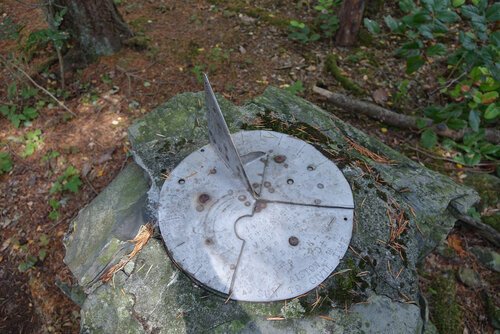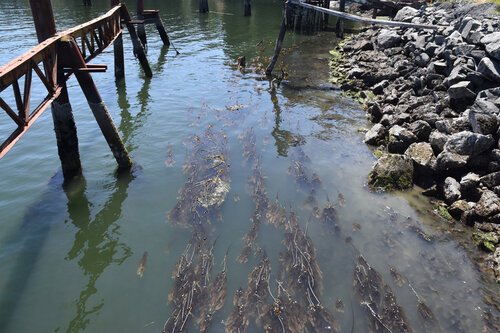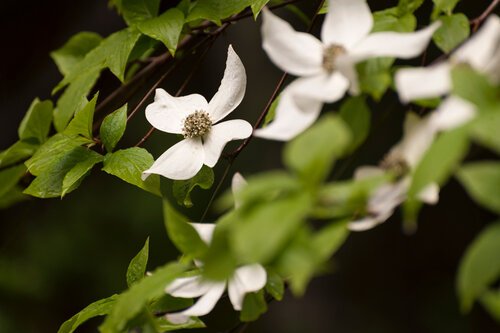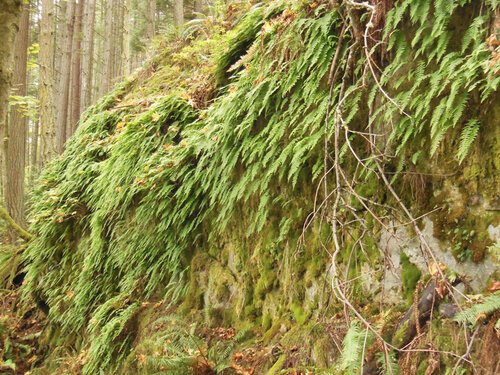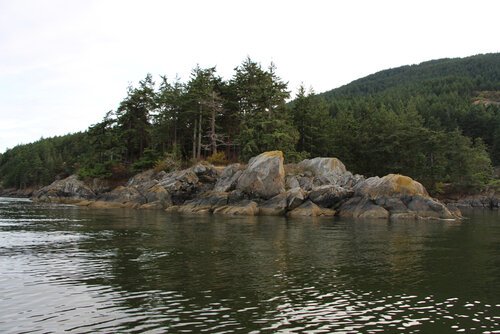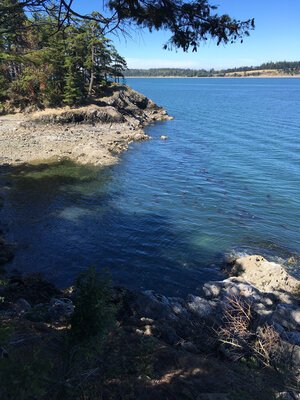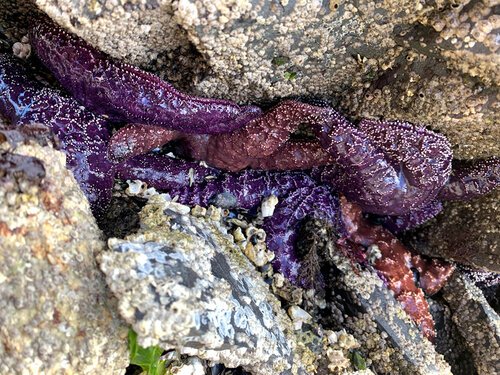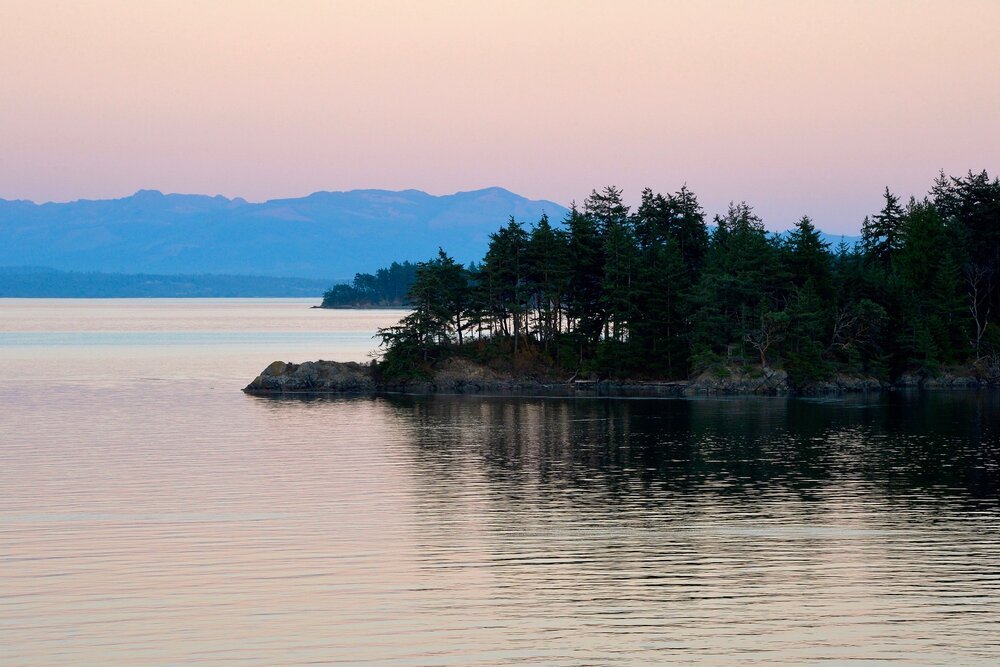Aiston Preserve Project Updates
Finally, after years of feasibility studies, biological and cultural surveys, grant writing, and County, State and Federal permit applications, the restoration construction work at the Aiston Preserve has begun!
At the end of September, two barges carrying huge cranes, two empty barges, and five tugboats began the job of removing the old dock, illegal pier, and 82 pilings from the shoreline in Smugglers Cove. The empty barges were filled to overflowing with over 30 tons of metal and rotten wood that is being recycled or properly disposed of. At the end of October, our contractors will return to finish removing the old creosote pilings. Removing the overwater structures – the pier and dock – will allow light to penetrate the water so that eelgrass and kelp can grow. Eelgrass and kelp beds are critical habitat for many marine species, like Dungeness crab and the forage fish that salmon rely on as they migrate from the Nooksack River. Removing the pilings will further eliminate shading and the pollution from creosote that contaminates these waters used by many marine birds.
But wait – there’s more! We are currently working with Whatcom County to secure the permits we will need for the next part of the nearshore restoration. Next summer, we will be able to remove the rip rap and gravel fill that was piled along 500 feet of shoreline, regrade the slope along that shore, and create a pocket beach where boats will be able to safely land. The beach will be designed so that in case of an emergency a landing craft could access Lummi Island at the Aiston Preserve.
Riprap on shoreline
The big rocks that we remove from the shoreline will be used to create a large berm on the upland to mitigate the dangers of falling rock so that people can safely access the area. The shoreline and upland will be planted with native trees and shrubs, and an area will be seeded with meadow grass. The grass area will be kept open so that in case of an emergency a helicopter could land at the Aiston Preserve. Rock grading at key points along the mine benches will make areas safe for walking trails and native trees and shrubs will be planted on the bench areas to reconnect the upland and nearshore habitats.
But wait – there’s more! The final part of the Aiston Preserve restoration project will be the construction for public access. We will improve a parking area, place wayfinding and interpretive signs, create an ADA compliant viewpoint at the shoreline, install mooring buoys and a no anchor zone, build a restroom, and designate trails along the shoreline and up to a high viewpoint on the mine benches. The mooring buoys and no anchor zone will ensure that the eelgrass and kelp beds in Smugglers Cove are protected, and the upland trails and viewpoints will make the Aiston Preserve a spectacular place to visit – whether by land or by sea.
Abner Point - photo by Judd Williams
The small finger of land known as Abner Point, will be accessible only by small boat and will remain rustic and natural in an effort to protect the very fragile habitats found on this small point of land. The Trust will closely monitor the native plants and lichens found on the mossy balds and rocky shore of Abner Point. These delicate habitats could quickly be destroyed by too much human foot traffic.
When the Heritage Trust purchased this land and mining was halted, 105 acres and 4,000 feet of Lummi Island shoreline was permanently protected. Today, the efforts to restore the damaged parts of the land and shoreline are well underway. The Aiston Preserve restoration project promises broad and lasting benefits for future generations of plants, wildlife, sea life and people.
Thank you for being part of this big, exciting project.
